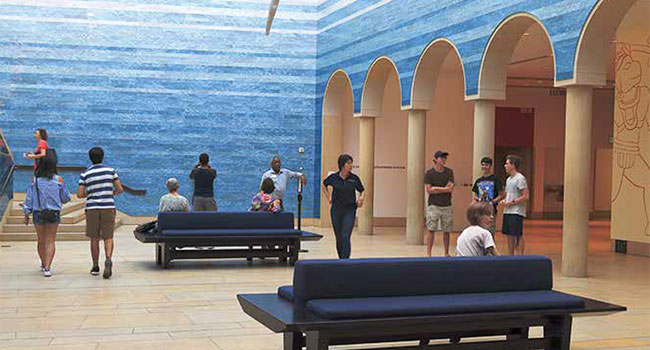
A Learning Environment
How innovations promote security and privacy on the campus
- By Lori R. Brown
- April 14, 2020
As we embark on a new decade, it’s important to assess
the changing landscape in the life safety and access
control industry. On campuses across the United
States, the security and privacy landscape looks dramatically
different than it did ten, or even five years
ago. Threats have evolved, security has been questioned and reevaluated
and guidelines to promote safety on campuses have been tightened
and redefined.
Simultaneously, cultural and demographic changes on campuses
are continuing to evolve. For example, as gender neutral spaces and
private areas for study and meditation become more common on
campus, it has raised a host of new concerns about protecting student
safety and privacy.
One solution considered by access control professionals is status
indicators. Applying interior and exterior indicators, that clearly display
whether a room is in-use or vacant, to the door’s existing mortise
locks continue to provide the occupants safety while preventing an
unnecessary interruption while these spaces are in use.
The ultimate goal is to reduce risk and still maintain open access
and inclusivity for students and staff while also ensuring the latest
building codes and standards are met.
Security in Emergency Situations
In December 2018, a report issued by the Federal Commission on
School Safety recognized the importance of locks in emergency situations.
The report noted that “depending on their construction and
configuration, classroom doors can significantly delay or prevent an
attacker from reaching individuals within a classroom, thereby providing
a safe area for students and staff during a lockdown.”
Innovations. As a result, innovations in door opening solutions
and enhanced window glass and attack resistant solutions have been
introduced to the market and are being installed during new con- struction or retrofitted to existing models. School districts across the
U.S. have already begun implementing these changes for either the
perimeter of the building, the interior classroom doors, or both.
Upgraded locks. The report also called for upgraded locks that
allow teachers to lock doors from the inside, with or without the use
of a key, but with the ability to unlock the door from the outside by
authorized personnel in the event of an emergency.
Thumbturn operation. Applying existing technology to a durable
mortise lock, like a thumbturn operation, eliminates the need for a
key from the interior and enables quicker action. Such locks are
inherently useful in emergency situations when it’s necessary to lock
or unlock an exit quickly by simply rotating the thumbturn. This
might be an obvious enhancement, but its implementation increases
reliability and reduces complexity in high-stress moments when it
may be difficult to engage fine motor skills needed to insert a key.
The standards. Meeting standards and guidelines is just the bare
minimum. The industry needs to constantly be on the lookout for
new ways to exceed these standards, especially when the potential
tradeoff is risking the safety of those around us.
The Lock Status Solution
We shouldn’t be content with developing products that just meet
standards. As innovators in our industry, it is incumbent upon us to
not only meet those standards and codes, but to go beyond and
exceed them where possible to secure all types of environments to
decrease risk and increase safety.
Universities and schools across the United States should look at the
latest technology, tools and innovations available to enhance the safety
of its classrooms, buildings and more, as well as providing the
comfort and safety of an inclusive environment.
Lock status indicators are an easy upgrade to consider. The latest in
mortise lock status indicators include enhancements that make the
access status of a room or space obvious to its occupants. Larger
viewing windows, added reflective coating and new curved designs
are some of the benefits of new mortise locks with a lasting impact:
- Large Viewing Window – Larger viewing windows allow those
inside and outside of the space to see whether a door is locked or
unlocked from farther away.
- Reflective Coating – An added reflective coating makes it easier
to view the lock status in low-light conditions, ensuring safety and
privacy at all times of the day and night.
- Curved Design – A curved design provides the ability to view the
lock status from any angle.
- Durable and Reliable – Reliable and durable security option that
meets the specifications laid out by the Federal Commission on
School Safety for classroom environments.
Status indicators are a versatile and affordable tool that can address
a multitude of concerns. By supporting the ability to lock with a key
or thumbturn from the inside, with just a quick glance, faculty, staff,
students and security personnel can confirm their safety in emergency
situations where seconds can make all the difference. Additionally,
that quick glance encourages an inclusive and comfortable environment
for all members on campus.
Guidelines and safety standards will certainly continue to evolve
with the times, designed to defend us against the latest threats and
keep us safe – history has shown us that they will. But our job as an
industry of innovators isn’t merely to meet them, it’s to surpass them.
Not for a competitive edge in the marketplace, but to protect the
future innovators at schools and on campuses around the country.
This article originally appeared in the March April 2020 issue of Campus Security Today.